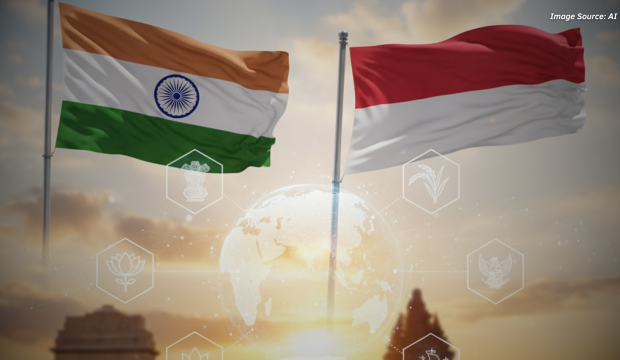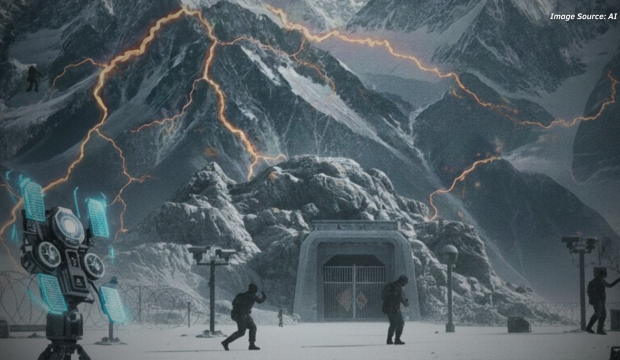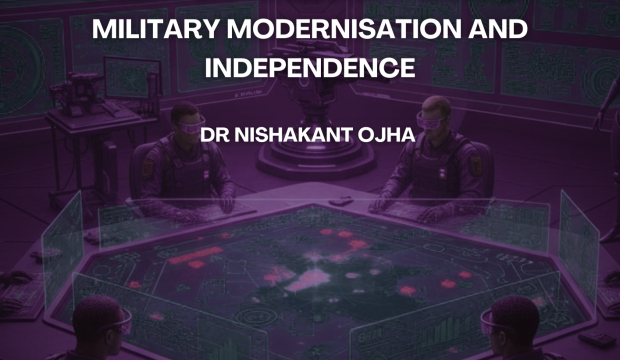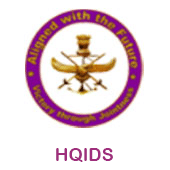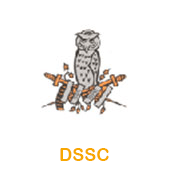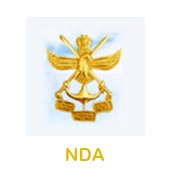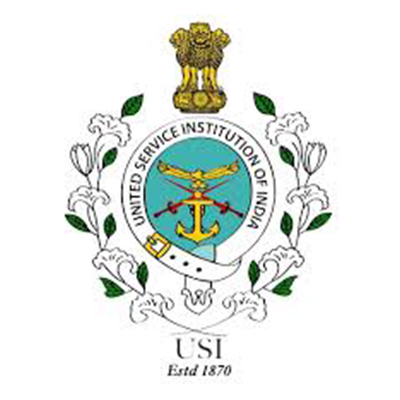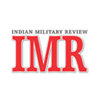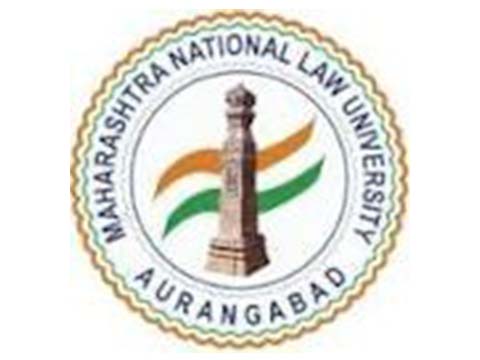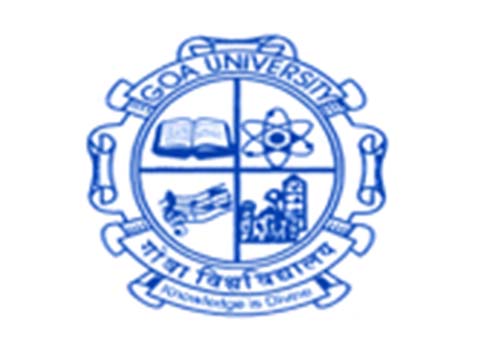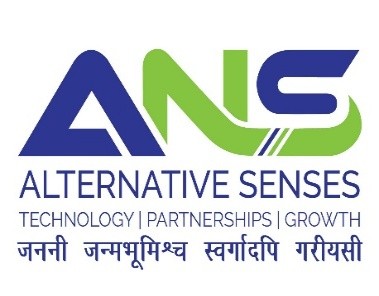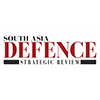Abstract
Since times immemorial, technology has permeated warfighting and has shaped the conduct as well as the outcome of wars. This paper aims to bring out some of the niche technologies which could have an impact on joint warfighting. Based on a review of the literature, the paper has adopted a framework of first identifying some of the emerging technologies affecting joint warfighting, thereafter identifying the factors affecting warfighting (space, time, force, decision making) and finally the impact of the identified technologies on factors affecting warfighting. The analysis based on this framework brings out that technology increases the space of operations, reduces the timeframe to act, enhances the effectiveness of forces and reduces the decision-making timelines. This impact eventually enhances the chances of a technologically adept side to win a war.
Introduction
Technology has a permeating effect on warfighting, hence technological superiority will have a prominent place in future wars. Revolution in Military Affairs (RMA) is deeply influenced by technology through changes in strategy and doctrine. Stirrups were an innovation or technological advent which led to RMA and the Mongols utilized it fully to establish one of the largest empires in the history. Technology has always been capable of dual use that is for civilian use as well as military use; for example, during the metal age implements made of metal were used for agriculture and tamed animals who were used for assisting humans in daily chores including agriculture. However, with passage of time, the same implements were tweaked to be used as weapons for war along with the animals like horses and elephants, also being used for war. In modern parlance, the use of chips is an apt example. It is used in domestic equipment like washing machine etc. and the same chip can also be used for drones Similarly, computers used in civilian domain find a lot of use in military domain. In the recent times, evolution of warfare has also brought out the ability of technology to fill in for numbers, leading to the paradigm of technologically advanced forces getting the better of larger low-tech forces. This has been proved by the Europeans in their conquest of the world with the help of numerically inferior forces but equipped with superior technology. The gulf war also elucidated the dominance of niche technology on battlefield whereas recent examples highlighting the same are Nagorno Karabakh conflict, Russia-Ukraine war and Israel-Hamas war. Technological advancements may not always be eureka moments in the history of its evolution, but may also include amalgamation of available technologies to foster a niche technological output.
Framework of the Paper.
To elucidate the theme that is “impact of niche technology on joint war fighting”, the paper would follow the following frame work:
- First, it would identify emerging technologies for joint warfighting (including technologies in various stages of maturity or on the horizon).
- Thereafter it would identify the factors affecting war fighting.
- Lastly it would bring out the impact of the identified technologies on the factors affecting war fighting.
Emerging Technologies
The appointment of Chief of Defence Staff (CDS), creation of Department of Military Affairs (DMA) and buzz about integrated theatre commands, has ushered jointness, integration and joint warfighting to the center stage of Indian military, academic and policy discussions. Technology is an important cog in the warfighting wheel, therefore, out of plethora of technological developments, the following technologies have been selected, keeping in mind their impact on joint warfighting.
Artificial Intelligence (AI)
Russian President Vladimir Putin said “Artificial intelligence is the future, not only for Russia but for all humankind. Whoever becomes the leader in this sphere will become ruler of the world.”1 In India NITI Aayog defines it as a constellation of technologies that enable machines to act with higher levels of intelligence and emulate the human capabilities of sense, comprehend and act.2
AI employment in the military is in the fields of autonomous navigation (swarm drones), image recognition (ISR), threat recognition by integrating multiple sensors, simulation, cyber security etc. Army Design Bureau, using Computer Vision3 has developed an AI powered night vision device which is connected to a wristband that vibrates and silently notifies a sentry on duty in case of any suspicious activity. Another achievement is the implementation of real-time translation of Chinese audio into English/ Hindi by a homegrown company called Cogknit.4 This can be used by troops deployed on the border, grasping of ISR data and enhance situational awareness of pilots flying near the border. AI can be gainfully employed in detecting changes by observing photos over a period by employing ‘Image correlation’. AI can also be used for enhancing maritime domain awareness (MDA), predictive maintenance, data analytics, text mining and cybersecurity.5 Anshuman Narang in his book “China’s Strategic Deterrence” brings out that AI would impact “acoustic signal processing, underwater target recognition, electronic warfare, enhanced C4I2SR making battle space more transparent through data fusion, info processing, intelligence analysis, military planning and deductions, intelligent autonomous systems for swarm, missile intelligentisation, simulation, wargaming, training, expansion of human stamina, precision logistics, deep semantic analysis, maritime robots and unmanned AI enabled submarines6 to change the current informatized warfare to intelligentised warfare”.
Quantum Technology (QT)
Quantum is a dual use technology with a possibility of changing the world and concept of warfare completely in the future.7 QT is rooted to quantum physics which is probabilistic in nature, counterintuitive and predicts phenomena which classical physics cannot predict.8 QT uses the properties of superposition and entanglement for a wide range of applications.
Quantum technology promises manifold use for the armed forces. It is used for Quantum Computing9 (harnesses the laws of quantum mechanics to solve problems too complex for classical computers), Quantum-encryption10 (more secure than classical protocols and will make encryption impermeable), Quantum positioning system (navigation in GPS denied environment), Quantum Radar11 (operates in high background noise and can detect stealth aircraft), Quantum Sensing (sense around the corners and small size) and Quantum Communication12 (creates secure channels for information transfer and is resistant to eavesdropping). These applications have the capability of starting another revolution in military affairs.
Environmental Issues
Environmental sustainability is one of the critical considerations while setting up any CBS. The rapid urbanization and industrialization associated with these settlements can strain local ecosystems and natural resources. China’s remarkable achievements in rural poverty reduction in the last four decades are at risk from climate change. Farmers need to adopt green agricultural practices to build resilience and contribute to China’s 2060 net-zero carbon goals.6 Efforts to balance economic growth with environmental protection are essential to ensure long-term sustainability and mitigate ecological impacts on both sides of the borders.
5G/6G/ Internet of Military Things (IoMT) Devices
5G and 6G refers to the 5th and 6th generation of mobile wireless network. 5G has data transfer speed 10 times greater than 4G and 6G is predicted to have data transfer rate 10 times greater than 5G.13 The substantially high frequencies of 6G have two key effects, first is substantial low latency (time taken by data to travel from source to end user) and second is the higher bandwidth which determines the amount of data that can travel over the network at a time. Unmanned machines would play a stellar role in the future warfare and 6G would provide the operators better control on them14 because of their properties of high data handling capability and low latency. 6G would be an intelligent as well as adaptive network and its exploitation can reduce sensor to shooter time by shortening the OODA loop. Another application of this technology could be in providing last mile connectivity to units or elements that are not directly connected with OFC network, either because of their remote locations or due to their high mobility roles. A battlefield C4ISR grid can be formed using 5G private network technology. Various elements like ground vehicles (GV), Low Earth Orbit (LEO) satellites, HAPS and UAVs can be used to form a 5G/ 6G network. The technology can also be used to provide tactical 5G Adhoc Networks15 of various sensors at tactical level to provide more accurate firing solutions to the AD weapon system. Here, a wireless sensor network or a device-to-device network can be formed using nearby ELINT sensors, ISR platforms like UAV, SIGINT ground stations and any other passive sensor component. This information can be fed to AI enabled aggregator software at AD Command post to help generate firing solutions with minimum use of active transmission. 5G/ 6G networks can provide low latency that would be required for such operations.
The integration of AI and 6G would optimize network resources, predict user demands, dynamically allocate bandwidth and unlock new possibilities for an array of IoMT applications. IoMT is a class of heterogeneously connected devices employed for future warfare16. It allows real-time connection between devices like unmanned vehicles and command station. For such connections 5G/ 6G would be a prerequisite because of their high bandwidth and low latency. Sensors of IoMT in battlefield enhance surveillance capability and thereby increase the situational awareness (SA) of commander. This enhanced SA ultimately leads to shortening of own OODA loop and a holistic response to the adversary.
Robotics
Robotics is a branch of engineering and computer science that involves manufacture and operations of robots17. The objective of the field is to create intelligent machines which can assist humans in performing their work. Coupled with AI and machine learning, robotics products can handle repetitive, dull and dangerous tasks without any mistakes, without getting sick and working 24 X 7.
Robotics could be used in developing and fielding ‘unexploded bomblets handling robots’ (UXBR). With the threat of bomblets in SEAD/DEAD and runway denial missions by the enemy, the UXBR would be a highly effective and life saving option. The second application could be developing and fielding ‘weapon handler robots’. This will not only aid in performing the mission critical task of weapon handling but also tide over the perennial problem of manpower shortage in the armed forces. The third application could be ‘cargo handler robots’ for use by armed forces in lugging around load and free up troops for combat duties. The fourth application could be for ‘guard robots’, enabled with AI (computer vision and natural language processing) these robots could be used for guarding infrastructure and scanning of incoming personnel before granting them access to military stations.
Drones/ Unmanned Surface Vehicles (USVs)/ Unmanned Ground Vehicles
The wars of the 21st century have highlighted the utility of drones/ USVs/ UGVs from ISR to combat roles. The incorporation of advanced sensor, edge processing and AI has enhanced the ‘God Mode’ of these platforms18 with likely upgradation from ‘remotely piloted’ to ‘autonomous’ drones/ USVs/ UGVs and swarms.
Drones can be employed for ISR, EW, logistics, communications and Kinetic roles. The tedious and time-consuming analytical work of interpreting the data from various EO/IR, ELINT/COMINT/SIGINT sensors in these drones could be automated using AI to shorten the OODA loop. Drones have proven their mettle in Armenia- Azerbaijan war, Russia Ukraine conflict and Israel- Hamas war.
Man-Unmanned Teaming (MUM-T)
MUM-T refers to combining manned and unmanned vehicles/ aircraft/ boats etc. to undertake integrated missions complementing each other’s capabilities.19 This team could perform ‘networked’ Kinetic (including absorbing enemy fire), ISR, EW, roles with the manned system providing ‘human in the loop’ for ethical warfighting. With AI in the swarm drones, the sensor data will be processed faster and lead to shortening the OODA loop and reducing the combat decision making time.
MUM-T platforms have form fit function of a manned aircraft, but utilise AI to fly the mission.20 The employment philosophy consists of one manned leader along with 6-7 unmanned aircraft. By swapping mission specific modules, a MUM-T airframe could be prepared for prosecuting any mission (SEAD/ CSFO/ Interception/ ISR/ BDA).21 Additionally, the onboard AI coupled with sensors would enable the combat drones to execute missions even in a contested/ denied environment with no GPS, no waypoints and no communications.22
Directed Energy Weapons/ Counter Drone System
Directed Energy Weapons (DEWs) are a type of electromagnetic or particle technology which use energy, as opposed to a physical projectile, to strike a target.23 DEWs encompass three distinct technologies. First,
Laser including High Energy Laser (HEL) and low energy laser, second Radio Frequency Systems involving high powered microwaves (HPM) as well as millimetre waves and third Particle Beam systems.
HEL and Particle Beam Systems, can lead to disruption and destruction of equipment, whereas low-energy lasers can dazzle systems including sensors on satellites. HPM can degrade and damage electronics, thus can be used to counter threats of unmanned aerial system as well as a wide range of electronics. The DEWs would be used for security of static bases and Naval ships from drones. They can also be used to dazzle satellites and engage missiles.24 DEWs use energy fired at the speed of light, making them faster and potentially less costly per shot than missiles. HEL based DEWs can engage incoming missiles at a greater range than existing CIWS systems with matching rate of fire with lesser logistical requirements than CIWS. Laser based DEW suffer from atmospheric factors and line of sight range limitations. It can be mitigated through Microwave based DEW which is yet to materialise in India. DEW technology, once fully matured and weaponised, will be crucial enabler in neutralisation of both air and space based threats at various ranges. Indian companies like BEL and Zen technologies have taken nascent steps into developing Counter Unmanned Aerial System (CUAS).25
Hypersonic Weapon Technology
Hypersonic flight is defined as flight over Mach 5/ 6172 kmph and can penetrate advanced Ballistic Missile Defence (BMD) and Air Defence.26
Hypersonic weapons being developed are of two types: Hypersonic Glide Vehicles (HGVs) and Hypersonic Cruise Vehicles (HCVs).27 The HGVs lack propulsion and are referred to as boost-glide types. They are connected to a booster rocket and propelled to an altitude of roughly 100 kilometres. At this height, the craft separates and descends to earth on a somewhat flat trajectory while utilizing the height to accelerate to hypersonic speeds of Mach 8 to 10. The HCVs can be launched either via booster rockets or a mother aircraft. A propulsion system that would ignite after separation would supplement cruise phase, giving the descending projectile extra speed and permitting greater manoeuvrability.
With their characteristics of high speeds, compressed timelines, extended ranges and manoeuvrability; hypersonic weapons could provide various strategic and military benefits. They might supplement ballistic choices, but what would spur interest and investment in the future would be their capacity to defeat conventional missile defences,28 thereby influencing adversary’s A2AD plans. These weapons may be employed against Air Defence targets, strategic targets, maritime targets such as Aircraft Carrier, Command and Control Centres and Interdiction targets.
Near Space Platforms
Near space is defined as the region which is between 20 Km (Armstrong limit altitude) and 100 Km (Von Karman line), that is between air-space and outer space.29 The development of lightweight solar cells, high-energy-density batteries, miniaturization of electronics, exponential increase in computing power and lightweight, strong, flexible materials that can resist degradation under strong ultraviolet illumination with impermeability to gases have made near space platforms possible. Graphene is a material made from graphite using Nano Technology (discussed later in the paper) is the strongest material ever measured. It is 200 times stronger than steel, can stretch like rubber, completely impermeable to liquid as well as gases and is very light weight.30 The convergence of these technological advances has led to the development of Near Space Platforms. Two such Near Space platforms are Near Space Balloon and Near Space Unmanned System also called High Altitude Pseudo Satellites (HAPS).31
Near Space balloons and HAPS can be used for persistent ISR, communication, position, navigation, time and maritime domain awareness. The advantages accrued are persistence over point of interest, better resolution due proximity to point of interest, wide and easily adjustable footprint for ISR/ communication role and cost effectiveness.32
Virtual Reality (VR)
Virtual reality is defined as ‘any set up that aims to elicit human neural responses using externally and intentionally created synthetic environments, such as that obtained during interaction with the physical world.’33 It uses specialized equipment to create a virtual environment which stimulates one’s senses by introducing changes in the virtual environment.
Virtual reality would be used for realistic training through high fidelity simulation thereby providing the forces with better trained individuals. VR may also be used for stress testing of individuals for various assignments and also training them culturally before any foreign duty or exercise with foreign forces.
Augmented Reality (AR)
VR equipment is bulky and creates a virtual environment which is removed from the actual environment. These limitations of VR are solved by another technology called Augmented Reality.34 AR doesn’t require a person to wear any equipment, instead it overlays information on the real world.
This technology makes it possible to simulate flying/ driving/ sailing in various scenarios without a functional flying simulator. It can also be used to enhance existing low grade simulators with immersive experience for realistic training. AR allows even more realistic training with the person being aware of the surrounding
Nano technology and Materials Science
Nano technology is the field of science that involves manipulation of matter on atomic scale to design new structures, materials and devices35. This technology can be used for reducing the size and weight of equipment carried by soldiers and also developing new materials for military purposes e.g. light weight material for making battle dress of soldiers, ability to stop bullets and protection against toxins. The technology may also be applied to aerospace for making nano satellites, nano sensors and nano drones, wherein the technology would be used to change the micro structure of aluminium to make it akin to titanium sans the weight penalty.
Elucidating Factors Affecting War
Milan Vego in his seminal work ‘Joint Operational Warfare’ has brought out that ‘the art of warfare is to obtain and maintain freedom of action- the ability to carry out critically important, multiple and diverse decisions to accomplish assigned military objectives. One’s freedom of action is achieved primarily by balancing the factors of space, time and forces. These factors and, increasingly, information are pivotal for making sound decisions at all levels. The higher the level of war the larger the factors of space, time and force and hence the more critical for the commanders and their staff to properly balance these factors.’36 The essence being that war fighting is impacted by control of the following factors: –
Space. Milan Vego brings out that ‘factor of space encompasses land, sea and airspace including outer space with all their features which influence the employment of land, sea and air forces”37. In the present scenario of technological advances and presence of attack vectors of all kind of ranges the “physical space in which friendly and enemy forces move and manoeuvre will probably be much larger than it is today. The lines separating the rear zone and combat zone will be further blurred and the zones increasingly difficult to differentiate.’38
Time. Milan Vego brings out that ‘any military action or measure requires a certain amount of time to plan, prepare, conduct and sustain. Large forces do not just suddenly appear in a theatre. They sometimes need several days or even weeks to complete movement from one area to another.’39 Technological advances made in the field of ISR and secure communication of the same to commanders would compress the factor of time involved in sound decision making for movement and action by forces.
Force. Milan Vego brings out that ‘force in its narrowest meaning pertains to military forces of power. Properly understood, however, the factor of force includes not only troops, naval forces and air forces but also the forces of all services with their logistical support.’40 The technological advances would redefine the factor of force from massing to concentration of effects. Hence the force effectiveness would depend on quality rather than quantity.
Decision Making. Colonel John Boyd of USAF developed a decision making framework in the form of Observe, Orient Decide, Act (OODA) loop.41 The cycle begins with an observation (provides situational awareness), which leads to situational orientation (contextualising the observation) of the commander. The commander then decides on appropriate course of action and finally acts (executes) on that decision. Thereafter the results are observed and the cycle is set in motion again. The aim being to go through the OODA loop faster than the enemy and disrupt his decision cycle.
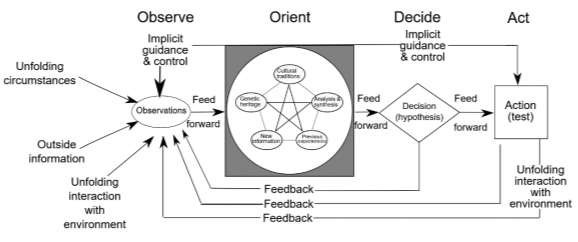
Impact of Technologies on Factors of Space, Time, Force and Decision Making
Space. The intelligence data obtained through near space platforms, Drones, MuMT would be securely communicated to the commander using 5G/ 6G/ Networks/ IoMT, AI and QT. The commander would then use QT, AI, decision algorithms and his experience to take a holistic decision and act at a place of his strength and enemy’s vulnerability using precision hypersonic weapons. In effect technology provides data and also empowers the commander to decide the area for mobilization and action thereby increasing the factor of space for operations.
Time. The ISR data obtained through near space platforms, Drones, MuMT, and its instant communication to the commander using 5G/ 6G/ Networks/ IoMT along with utilization of QT, AI and decision algorithms assist him in taking a decision faster. This gives the commander extra time to mobilise his forces. Apart from this, missile including hypersonic weapons can be used to stop access as well as deny an area to the enemy. The timeframe required to prepare the missile vis a vis the distances it affects is much less than the time required to mobilise forces to similar distances. Hence technology would help a commander to act proactively in lesser timeframe.
Force. The precise knowledge of enemy through ISR technologies, its instant communication to the commander and sound decision making with the help of AI, QT and decision algorithms enhances the effectiveness of any force under a commander. This assisted by hypersonic weapons (low probability of intercept), UCAVs, MuMT, Robotics etc. further increase the offensive effectiveness of the forces. DEW and Robots would be used for safety and security of bases. Nano technology would be used for enhancing the safety of combatants and AR/ VR would be used for their realistic training. The holistic effect of all these would be to enhance the effectiveness of the forces in war.
Decision Making. The technologies affecting the observe part of OODA loop are UAVs, Satellites and Airship. They assist in enhancing situational awareness about the enemy through ISR missions. This feed would be given to the orient part of the cycle through the technologies of SDR, Quantum Communication, Quantum Encryption, Sensors, 5G, 6G and IoMT. These technologies assist in communicating the observations about the enemy to the commander and enhancing the orientation of the commander of the likely battle space. The technologies of Quantum Computing along with decision making algorithms fed by big data, AI, ML would assist the commander in making a decision about the plan of action. These technologies assist the commander in taking a sound decision with the help of science and history amalgamated with his experiences and understanding/ appreciation of the situation. Hypersonic, MIRV, Precision munition, AI, Nano technology and material, UCAVs, MuMT and robotics along with other conventional forces assist the commander in executing the decision in a faster time frame. It is evident that the technologies reduce the time to go through own decision cycle and provide an opportunity to the commander to disrupt enemy’s decision cycle.
Conclusion
Technology is an important part of any revolution in military affairs and this has been elucidated succinctly by Sir Frank Whittle as “A nation’s ability to fight a modern war is as good as its technological ability.” However, technology alone is not an end all therefore to accrue maximum advantage of technological advancement, the doctrine of the Armed Forces must be open to advantages offered by the technology and evolve to amalgamate it into the central belief of the forces. Milan Vego is very prescient in sounding the same sentiment as “To fully exploit the potential of new technological advances such as netting of forces, operational concepts incorporating and integrating the new technologies must be developed into coherent doctrines.”43
DISCLAIMER
The paper is author’s individual scholastic articulation and does not necessarily reflect the views of CENJOWS. The author certifies that the article is original in content, unpublished and it has not been submitted for publication/ web upload elsewhere and that the facts and figures quoted are duly referenced, as needed and are believed to be correct.
*This paper was originally published in CENJOWS SYNERGY Journal [Vol 3 Issue 2] Aug 2024 Edition.
ENDNOTES
- Anshuman Narang, China’s Strategic Deterrence (New Delhi, 2019).
- Aayog, N. I. T. I. “National Strategy for Artificial Intelligence AIFORALL. niti.gov.in/writereaddata/files/document_publication.” National Strategy-for-AI-Discussion-Paper. pdf (2018).
- AI-enabled night vision device is being used by the Indian Army. Indiaai Case Study 30 May 23. Accessed at https://indiaai.gov.in/case-study/ai-enabled-night-vision-device-is-being-used-by-the-indian-army
- Army uses AI to break through the Chinese language barrier. Indiaai Case Study 30 May 23. Accessed at https://indiaai.gov.in/case-study/army-uses-ai-to-break-through-the-chinese-language-barrier
- “Indian Armed Forces Push for Integrating Niche Technologies – Defence News | The Financial Express,” accessed June 1, 2024, https://www.financialexpress.com/business/defence-indian-armed-forces-pushfor-integrating-niche-technologies-2630428/.
- Narang, China’s Strategic Deterrence.
- Narang, China’s Strategic Deterrence.
- “What Is Quantum Physics? Quantum Physics in Simple Terms | Caltech Science Exchange,” accessed June 10, 2023, https://scienceexchange.caltech.edu/topics/quantum-science-explained/quantum-physics.
- Narang, China’s Strategic Deterrence.
- Narang.
- Narang.
- Narang.
- “CHINA’S 6G TO POWER AI ARMY OF THE FUTURE,” accessed June 1, 2024, https://www.scmp.com/news/china/military/article/3080235/chinas-military-draws-6g-dream-.
- “CHINA’S 6G TO POWER AI ARMY OF THE FUTURE.”
- “Development of 5G Mobile Ad Hoc Networks for DoD – Defense Advancement,” accessed June 2, 2024, https://www.defenseadvancement.com/news/development-of-5g-mobile-ad-hoc-networks-for-dod/.
- Shafeeq Maheen, “Internet of Military Things (IoMT) and Future of Warfare” (Center for Aerospace and Security Studies, 2022).
- “What Is Robotics? | Definition from WhatIs,” accessed June 3, 2024, https://www.techtarget.com/whatis/definition/robotics.
- “Indian Armed Forces Push for Integrating Niche Technologies – Defence News | The Financial Express.”
- “Indian Armed Forces Push for Integrating Niche Technologies – Defence News | The Financial Express.”
- Kratos Defence,”XQ 58A Valkyrie:, “https://www.kratosdefense.com/-/media/k/pdf/usd/xq-58a-
valkyrie.pdf , Jan 25, 2018, accessed on Jun 11,2023 - SAE, “The future of Collaborative Combat Aircraft”,https://www.sae.org/highlights/the-future-ofcollaborative-combat-aircraft, accessed on Jun 11, 2023
- Shield AI, Worlds best AI pilot Hivemind”, https://shield.ai/hivemind/, accessed on Jun 11,2023
- “Directed-Energy Weapon – Wikipedia,” accessed June 2, 2024, https://en.wikipedia.org/wiki/Directedenergy_weapon.
- “Science & Tech Spotlight: Directed Energy Weapons | U.S. GAO,” accessed June 10, 2023, https://www.gao.gov/products/gao-23-106717.
- “Indian Military Orders Anti-Drone Systems from BEL and Zen Tech. – Bharat Shakti,” accessed June 3, 2024, https://bharatshakti.in/indian-military-orders-anti-drone-systems-from-bel-and-zen-tech/.
- Narang.
- Kelley M Sayler, “Hypersonic Weapons: Background and Issues for Congress,” accessed June 2, 2024, https://crsreports.congress.gov.
- Sayler.
- Narang, China’s Strategic Deterrence.
- Ric Edelman, The Truth About Your Future (New York: Simon & Schuster , Inc, 2018).
- Lt Col Edward B. Tomme, D. Phil. The Paradigm Shift to Effects-Based Space:
Near-Space as a Combat Space Effects Enabler (Air University : Maxwell AFB 2005) Page 5 - Narang, China’s Strategic Deterrence.
- “Military Applications of Virtual Reality and Beyond | Manohar Parrikar Institute for Defence Studies and Analyses,” accessed June 1, 2024, https://idsa.in/issuebrief/military-applications-of-virtual-realityand-beyond-aupadhyay-140923.
- Edelman, The Truth About Your Future.
- Edelman.
- Milan Vego, Joint Operational Warfare Theory and Practice, Revised Se (Rhode Island: US Naval war College, 2009).
- Vego.
- Vego.
- Vego.
- Vego.
- “The OODA Loop Explained: The Real Story about the Ultimate Model for Decision-Making in Competitive Environments | OODA Loop,” accessed May 31, 2024, https://www.oodaloop.com/theooda-loop-explained-the-real-story-about-the-ultimate-model-for-decision-making-in-competitiveenvironments/.
- “The OODA Loop Explained: The Real Story about the Ultimate Model for Decision-Making in Competitive Environments | OODA Loop.”
- Vego, Joint Operational Warfare Theory and Practice.

Gp Capt Ved Prakash Singh
Gp Capt Ved Prakash Singh, VSM, is a flying branch officer of IAF and has over 6800 hours of flying. He is a Qualified Flying Instructor, an Instrument Rating Instructor and Examiner. The Officer was member of the pioneer team for induction of C-130J aircraft in the IAF and has also undergone the Pilot Instructor Course on C-130J in USA. He has commanded a C-130J special ops unit and is currently posted to 4Wg as COO.


